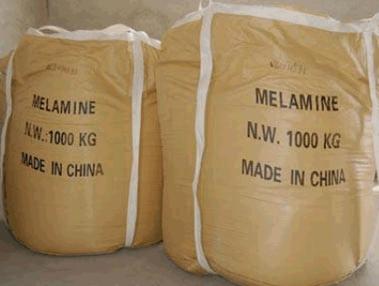aims Efficient and rapid techniques are used to efficiently detect potential melamine in various dairy products without the use of chromatographic separations. background Commercial uses of melamine include white wood, floor tiles, kitchen utensils, fire resistant fibers, and filters. In March 2007, melamine was found in maltose syrup and rice protein concentrate used in the manufacture of pet food, resulting in the death of a large number of pet dogs and cats due to kidney failure. In September 2008, there was a global panic of milk, baby formula and dairy products mixed with melamine. China reported about 300,000 patients, and 6 infants died of kidney stones and other kidney injuries. Why are these problems happening? The addition of melamine to animal feed is an accepted long-term practice. Melamine can be tested by conventional protein tests without being detected and can improve the Kjeldahl method for detecting protein content in foods. This, in the end, can increase profits, while the marginal profit of the bulk dairy industry is small, which is simple and inexpensive, and the regulations are very restrictive. Each sample takes less than 2.5 minutes, and ASAP works with ACQUITY TQD to quickly screen for melamine levels in a variety of samples. Figure 1. Milk (A) / infant formula (B) / chocolate (C) and melamine in biscuit (D) (m/z 127 → 60) 2.5 mg/kg peak (purple mark) vs control (green mark ) . Global response The response is fast but different for the level of safety and the product category to be tested. ■The daily intakes permitted by the US Food and Drug Administration and the European Food Safety Authority are 0.63 and 0.5 mg/kg body weight, respectively. ■Internationally, this limit has different levels ■Hong Kong: food = 2.5 mg/kg, infant formula = 1 mg/kg ■Taiwan: No melamine can be detected in any food ■EU 2008/798/EC: Foods containing >15% milk must be tested and foods with melamine content >2.5 mg/kg must be destroyed The law requires that melamine in foods be tested in quantities and contaminated batches must be destroyed, and the variety of foods to be tested poses challenges to analytical chemistry, such as whole milk, infant formula, chocolate and biscuits. Simple and rapid detection, the use of the smallest amount of sample, and avoidance of chromatographic separation are advantages of this method. method Atmospheric solid phase analytical probes (ASAP) can be used with ACQUITY® TQD to achieve these requirements with minimal sample and no chromatographic separation. This means rapid detection of the melamine content required by the regulations in each sample. Atmospheric solid phase analysis probe (ASAP) Using a positive displacement pipette, add 1 L of milk, baby milk powder or chocolate/cookie acetonitrile extract directly to the ASAP probe. Insert the probe into the sealed source and remove the solvent gas linearly to 400 ° C. The ACQUITY TQD has been set to multiple transitions in the Multi-Reaction Detection Mode (MRM), as shown in Table 1. to sum up Each sample takes less than 2.5 minutes, and ASAP works with ACQUITY TQD to quickly screen for melamine levels as specified in the various samples. Melamine can be detected without the use of chromatographic separation using the fewest samples. The advantages of this method for laboratories that need to control costs are increased productivity, reduced analysis time, and reduced sample preparation requirements, while reduced laboratory consumables, reduced environmental impact, and reduced solvent use reduce costs. JIANGMEN EASY TECHNOLOGY CO.,LTD , https://www.easylife-tech.com



Rapid detection of melamine in food
